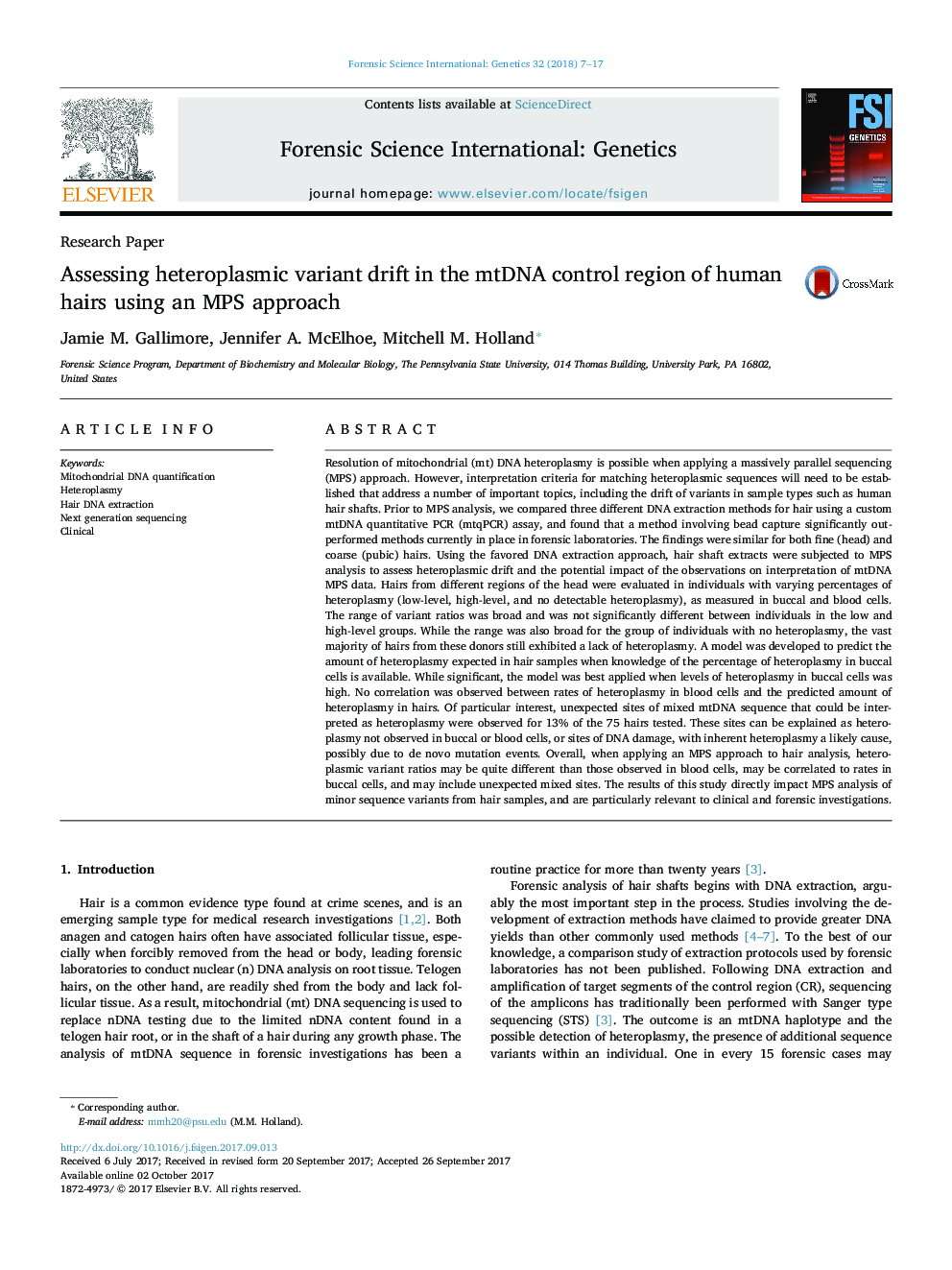| کد مقاله | کد نشریه | سال انتشار | مقاله انگلیسی | نسخه تمام متن |
|---|---|---|---|---|
| 6462666 | 1422146 | 2018 | 11 صفحه PDF | دانلود رایگان |
- A superior method for extraction of DNA from hair shafts was identified.
- A novel quantification method for assessing copies of mtDNA was developed.
- Individuals with no observed heteroplasmy in buccal & blood cells exhibited minor variant sites in 20% of their hairs.
- Individuals with low-level heteroplasmy in buccal & blood cells exhibited a wide range of minor variant rates in their hairs.
- Individuals with high-level heteroplasmy in buccal & blood cells often exhibited high-levels of heteroplasmy in their hairs.
Resolution of mitochondrial (mt) DNA heteroplasmy is possible when applying a massively parallel sequencing (MPS) approach. However, interpretation criteria for matching heteroplasmic sequences will need to be established that address a number of important topics, including the drift of variants in sample types such as human hair shafts. Prior to MPS analysis, we compared three different DNA extraction methods for hair using a custom mtDNA quantitative PCR (mtqPCR) assay, and found that a method involving bead capture significantly outperformed methods currently in place in forensic laboratories. The findings were similar for both fine (head) and coarse (pubic) hairs. Using the favored DNA extraction approach, hair shaft extracts were subjected to MPS analysis to assess heteroplasmic drift and the potential impact of the observations on interpretation of mtDNA MPS data. Hairs from different regions of the head were evaluated in individuals with varying percentages of heteroplasmy (low-level, high-level, and no detectable heteroplasmy), as measured in buccal and blood cells. The range of variant ratios was broad and was not significantly different between individuals in the low and high-level groups. While the range was also broad for the group of individuals with no heteroplasmy, the vast majority of hairs from these donors still exhibited a lack of heteroplasmy. A model was developed to predict the amount of heteroplasmy expected in hair samples when knowledge of the percentage of heteroplasmy in buccal cells is available. While significant, the model was best applied when levels of heteroplasmy in buccal cells was high. No correlation was observed between rates of heteroplasmy in blood cells and the predicted amount of heteroplasmy in hairs. Of particular interest, unexpected sites of mixed mtDNA sequence that could be interpreted as heteroplasmy were observed for 13% of the 75 hairs tested. These sites can be explained as heteroplasmy not observed in buccal or blood cells, or sites of DNA damage, with inherent heteroplasmy a likely cause, possibly due to de novo mutation events. Overall, when applying an MPS approach to hair analysis, heteroplasmic variant ratios may be quite different than those observed in blood cells, may be correlated to rates in buccal cells, and may include unexpected mixed sites. The results of this study directly impact MPS analysis of minor sequence variants from hair samples, and are particularly relevant to clinical and forensic investigations.
Journal: Forensic Science International: Genetics - Volume 32, January 2018, Pages 7-17
